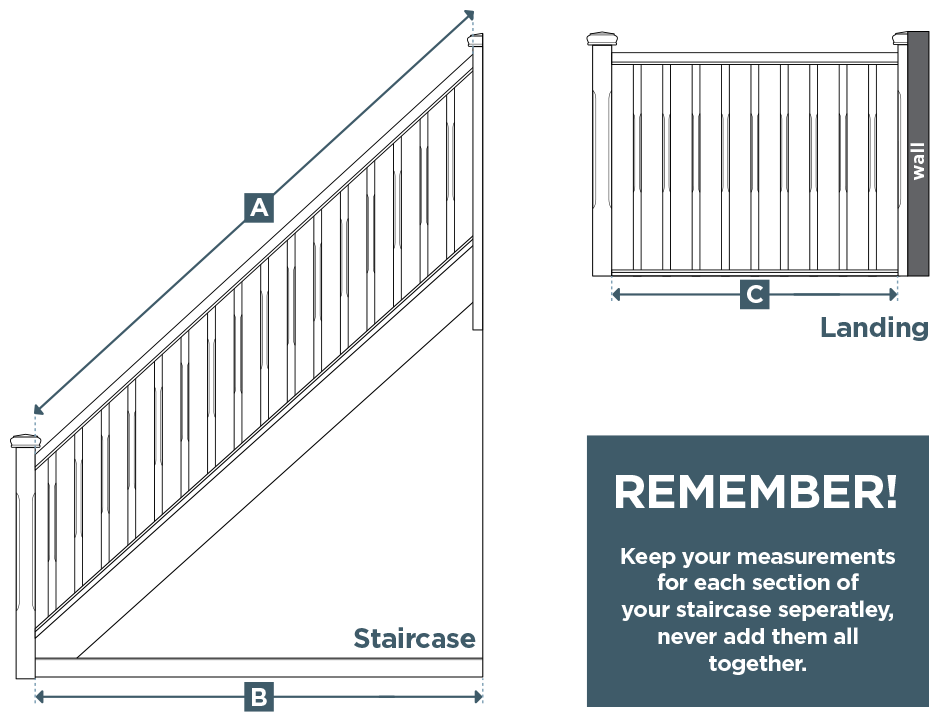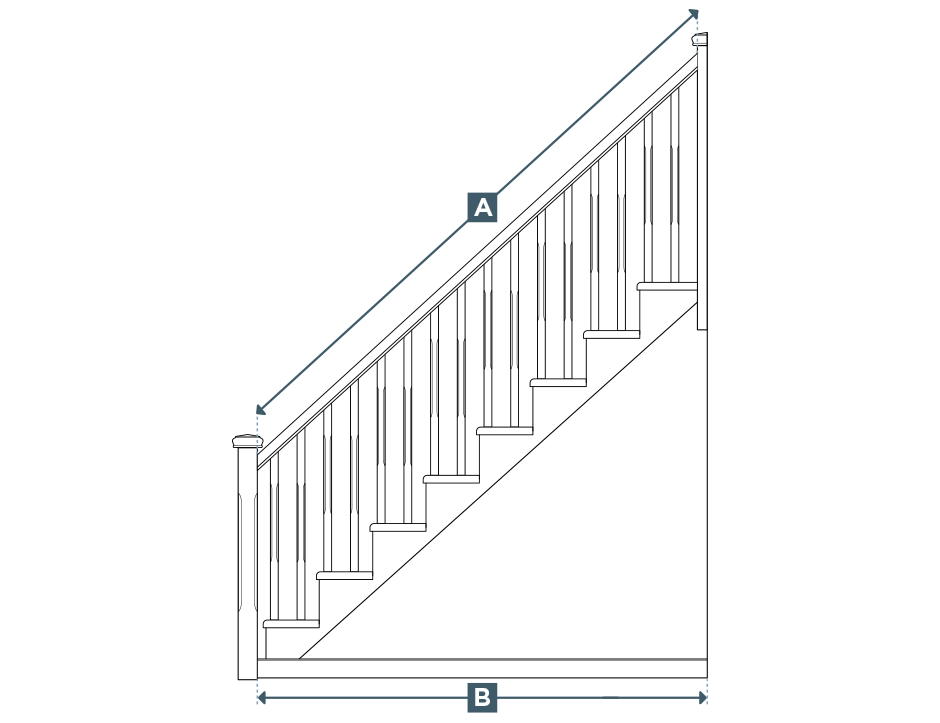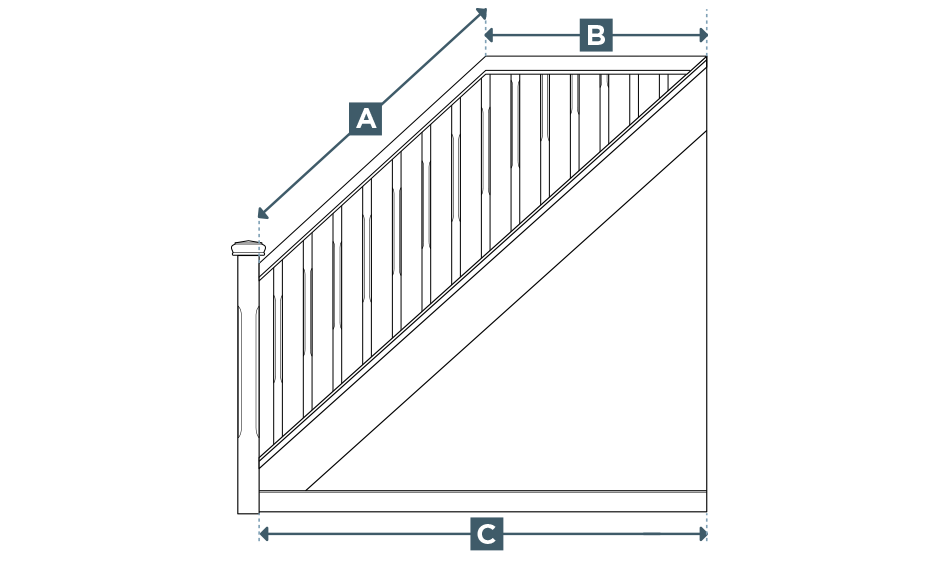How to Measure Your Staircase
When updating your staircase, you will need to accurately measure it in order to select your new stair parts. The assumption is that this is a complicated and even overwhelming job, but with our quick measuring guides you will find that as long as you can use a tape measure, it is actually quite simple
TOP TIP:
Take separate measurements for each section of your current staircase, i.e. the main stair run, the landing and any additional sections. This will make it much easier to work out the exact amounts of materials that you need, and to help minimise waste.
Standard Staircase

 |
 |
 |
| Measurement A will determine the correct length of handrail and base rail that you will need for the run that you are measuring. This should be measured on the inside and between the newel posts, ignoring any newel caps. | Measurement B will determine the 'going' of the stairs. Together with Measurement A, this will help to determine the pitch (or angle) of your staircase. With these two measurements you can then work out the amount of spindles required to fit your staircase. There isn’t a standard pitch for staircases and they can differ slightly from home to home. This is due to the fact that homes have been built over many decades, when there was no standardisation in staircase construction. | Measurement C will determine the length of handrail and base rail that you will need for the particular landing run that you are measuring. This should be measured on the inside and between the newel posts, ignoring any newel caps. |
Cut String/Open Tread Staircase

 |
 |
| Measurement A will determine the length of handrail that you will require for the particular run that you are measuring. This should be measured on the inside and between the newel posts, ignoring any newel caps. |
Measurement B is used to determine the amount of open treads that there are on the staircase. Two spindles are used per step and due to the pitch of the stairs, a 900mm spindle and an 1100mm spindle are required for each step. |

Diminishing Staircase

 |
 |
| Measurement A is to be taken from the newel post (ignoring any newel cap) to the point where the handrail touches the ceiling line. This measurement will partially determine the amount of handrail needed. | Measurement B is taken from the point of the ceiling line, to where the ceiling line touches the wall. This measurement will partially determine the amount of handrail or base rail (if chosen) needed to run along the ceiling line. |
 |
 |
| Measurement C will determine the length of base rail that you will need for the particular run that you are measuring. This should be measured between the newel post and the wall where the staircase finishes. If a base rail is already present, you can take the measurement from the existing rail. | Measurement D will determine the 'going' of the stairs. Along with Measurement C, this will help to determine the pitch (or angle) of your staircase. This will then help to determine the amount of spindles required for your stairs. The pitch of a staircases can vary from home to home, depending on the time it was built. |
